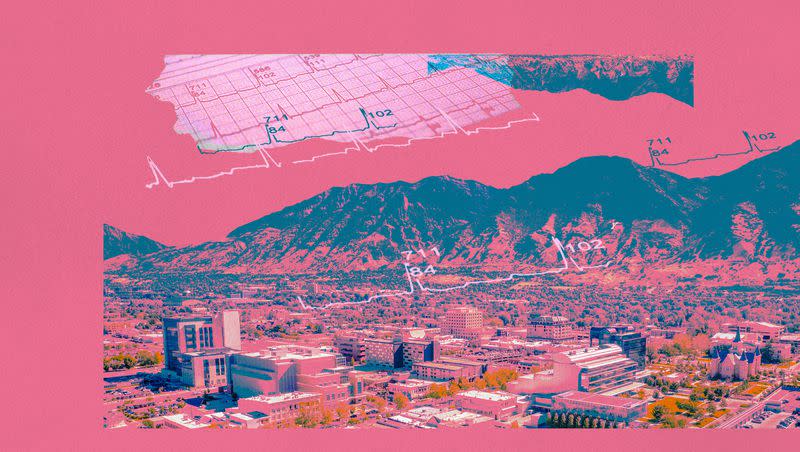‘Creative destruction’: How startups and failures fuel growth and innovation in Utah

Utah is known as the home of Silicon Slopes for good reason, as an early incubator of the computing revolution and a home to high-tech companies and countless startups. But Utah is also a national leader in business failures, which may actually be a secret to its economic success.
The state has long benefitted from what economists call “economic dynamism,” or an economy’s ability to generate new ideas and quickly put them to use through its firms and workers. The latest edition of the Index of State Dynamism from the Economic Innovation Group shows Utah ranks first as the country’s most dynamic economy for the fifth time in the past seven years. As most of the country has exhibited a long-run decline in dynamism — with a modest revival post-pandemic — Utah continues to lead.
Without dynamism, economies become dominated by larger, older firms, ultimately trending toward stagnation. In other words, states with vibrant economies welcome startups that disrupt or displace leading firms.
Economist Joseph Schumpeter coined the term “creative destruction,” embodying the idea that startups and failures together ultimately drive growth and innovation. Dynamic economies like Utah’s are pro-growth but also highly adaptable. Utah had the highest core startup rate in the country as of the latest available data through 2021, but has consistently ranked among the leaders in business closures, too.
Related
The most innovative states in the U.S. have been revealed. Where does Utah rank?
Opinion: Utah’s tech revolution can only expand so far without innovative policies
The bees have it
Utah ranks in the top 10 states on all component measures of economic dynamism. More than 13% of all workers in the state were employed by firms younger than five years old, the fifth-highest share in the U.S. While the state’s high startup rate shows entrepreneurs are spinning up new businesses quickly, the state’s high employment share within young firms shows they are also able to scale up and challenge larger rivals.
Yet, economic dynamism encompasses more than the ability of entrepreneurs to build successful startups. Dynamic economies also allow workers to move between jobs, firms and occupations as better opportunities arise. Utah’s “reallocation rate,” the share of workers who change jobs in a given year, ranked fifth nationally. In 2016, a statewide reform narrowed the scope of allowable noncompete agreements, employment clauses that limit workers’ ability to move to competitor firms. As federal authorities, including the Federal Trade Commission and the U.S. Congress, consider potential restrictions on the use of noncompetes, there is still work to be done in Utah and elsewhere to boost this critical ingredient to economic dynamism.
It should be no surprise, then, that Utah is playing a growing role in the country’s innovation ecosystem. The state saw one inventor obtain a patent for every 1,300 residents, a rate that has doubled since the mid-1990s and lifted Utah to among the top 10 states.
Utah saw a major influx of new residents both from abroad and from other states as the pandemic sent many families fleeing from major coastal cities. Utah’s population grew 1% just from incoming workers and families in 2021, the ninth-highest rate in the country. Long home to one of the fastest-growing populations in the U.S., Utah is building out its housing stock to accommodate this growth. The state ranks first in the country in new housing units per capita, permitting new homes at twice the rate of the average state.
The housing connection
Utah’s continued status as a leader in economic dynamism may hinge on whether the state can build enough housing for its rapidly growing workforce, particularly in cities home to high-tech startups. According to Federal Housing Finance Agency data, home prices in Utah have risen more than 70% over the past five years, in line with other booming states across the Mountain West and in the Sun Belt. However, the state must maintain (or more likely, accelerate) this rapid construction of new homes and apartments to avoid pricing out new workers, inventors and entrepreneurs who could build the next great Utah success story.
Affordable housing has attracted the attention of state leaders like Gov. Spencer Cox, who recently announced a slate of new actions to subsidize new affordable housing. And just last month, Salt Lake City abolished single-family zoning citywide. Though the latter may appear as a breakthrough in expanding Utah’s supply of housing near its high-tech clusters, the city’s legalization of fourplexes also came with a strict set of affordability rules that may doom the reform to produce few new homes in the end. Nevertheless, the challenge of maintaining national leadership in new home construction is clearly top of mind in the capital, a welcome sign for Utah’s future.
A commitment to renewal
Utah has built one of America’s fastest-growing economies by embracing economic dynamism, nurturing new startups and ideas while attracting top talent. Dynamism is ultimately what drives a state’s ability to innovate and grow over the long run. Cycles of boom and bust have come and gone both in the state and national economies; that will not change. But what separates Utah is the ability of its leaders, entrepreneurs and workers to continually embrace renewal, and other states seeking to replicate its success should take note.
Connor O’Brien is a research analyst at the Economic Innovation Group, a Washington D.C. think tank that focuses on economic geography and dynamism.

